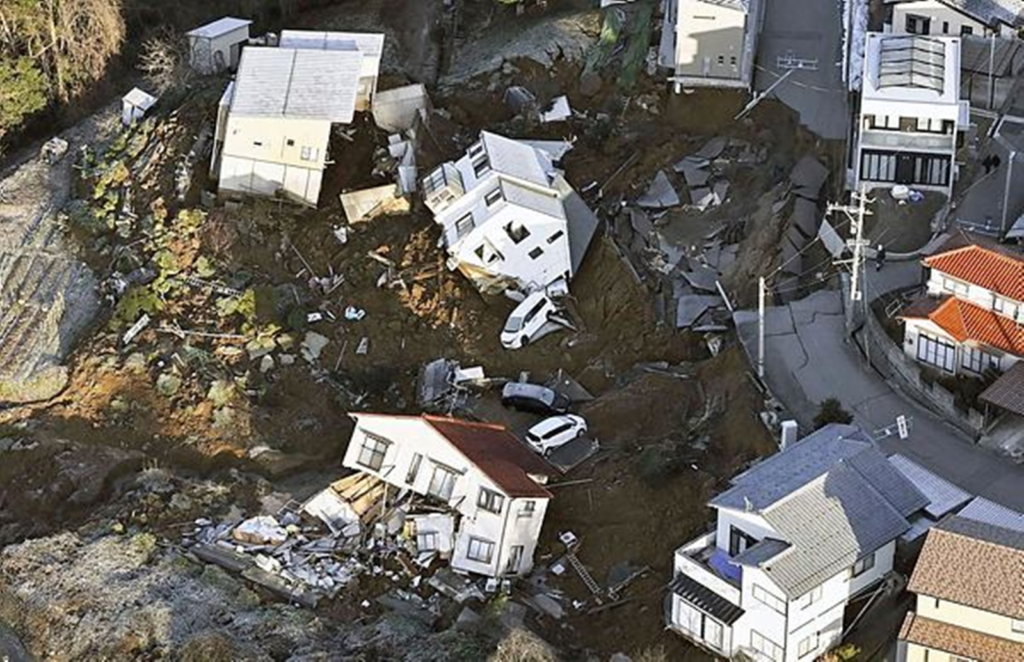Earthquakes are among nature’s strongest and most volatile powers. They arrive unexpectedly, causing the ground to tremble beneath our feet and, at times, leaving catastrophic destruction in their wake. The rise in the frequency and pattern of different earthquakes over the past few years has been a point of concern worldwide. From heavily populated cities to sparsely populated coastal regions, natural occurrences continue to remind us of the dynamic nature of Earth. This article looks into the reasons, trends, and effect of the different earthquake chronicles taking place throughout the world and discusses how we can prepare for and understand them better.
What Causes Earthquakes?
Fundamentally, all this things are caused by a sudden release of energy within the Earth’s crust, usually as a result of movement along faults. The Earth’s surface is broken up into tectonic plates that move continuously. When these plates rub against one another, pressure accumulates until it is released suddenly in the form of seismic waves—this is what we feel as an earthquake.
There are various types of earthquakes, such as:
Tectonic Earthquakes – Due to the movement of tectonic plates.
Volcanic Earthquakes – Associated with volcanic activity.
Induced Earthquakes – Man-made, induced by activities such as mining or fracking.
Collapse Earthquakes – Caused by underground cave-ins, frequently in mining areas.
Knowledge of the type of these different types of seismic activities assists scientists and emergency responders in preparing better.
Recent Global Earthquake Activity
In recent years, various parts of the globe have witnessed major seismic activities. Here is an overview of some of the most prominent of them:
1. Turkey and Syria (2023): One of the worst earthquakes in recent history hit southern Turkey and northern Syria in early 2023. Measuring 7.8 on the scale, it resulted in vast infrastructure damage, claiming tens of thousands of lives and displacing millions. It served as a wake-up call for seismic-resistant infrastructure, particularly in seismically vulnerable areas.

2. Japan (Constant Seismic Activity): Japan is located on the Pacific Ring of Fire and is extremely susceptible to numerous earthquakes. Although Japan boasts top-level earthquake preparedness, incidents like the 2011 Tōhoku earthquake and tsunami illustrate the ongoing danger. Frequent tremors keep pushing Japan’s disaster management system to its limits.

3. Afghanistan and Pakistan (2024): South-Central Asia experienced an increase in moderate to powerful earthquakes. A 6.2 magnitude earthquake hit Afghanistan close to the border with Pakistan in 2024, triggering landslides and building damage in mountainous terrain.

4. Indonesia (Constant Tremors): Indonesia records many different kinds of earthquakes throughout the year as it sits atop several tectonic boundaries. The combination of seismic activity and active volcanism presents a constant threat to people living there as well as travelers.

The Science Behind Measuring Earthquakes
Intensity, or the manner in which a seismic activity is experienced on the surface, is measured by the Modified Mercalli Intensity (MMI) scale.
Due to advances in technology, scientists are now able to pick up even the slightest seismic movement on the globe. Seismographs and global networks aid in monitoring different earthquakes, enabling faster alerts and more precise data gathering.
Why Are Earthquakes on the Rise?
Although it might appear that earthquakes are more frequent, the rise in reports is sometimes attributed to improved detection technology and worldwide connectivity. Yet, some experts propose that numerous earthquakes could become more frequent because of:
Climate-related changes (glacier melting decreasing pressure on tectonic plates).
Human-induced seismicity (deep-well injection or dam reservoirs).
More urban growth in fault zones.
Recognizing these trends is essential for disaster mitigation and urban planning.
The Effects of Different Earthquakes
The effects of earthquakes go well beyond the initial shaking. Some of the most frequent consequences include:
Damage to Structures: Buildings, roads, and bridges may collapse, particularly if constructed without seismic standards.
Tsunamis: Earthquakes occurring underwater have the potential to create huge waves that destroy coastal settlements.
Land Slides: Mountainous areas tend to experience landslides in the aftermath of a quake.
Economic Loss: Reconstruction and recovery costs can run into billions of dollars.
Psychological Trauma: Victims of violent earthquakes tend to experience long-term mental health problems.
Governments and NGOs around the globe are investing in preparation and education as a means to reduce the long-term impacts of different earthquakes.
Preparing for the Next Quake
As it is impossible to predict earthquakes, preparation is most important. These are a couple of globally endorsed safety measures:
Prepare an Emergency Kit: Pack food, water, medication, flashlight, batteries, and whistle.
Identify Safe Places: When shaking occurs, “Drop, Cover, and Hold On” near a heavy table or desk.
Seismic Strengthen Buildings: Fortify older buildings to seismic codes.
Get Information: Utilize apps and notifications that alert you to local different earthquakes.
Earthquake drills and public education campaigns save lives in high-risk areas.
The Role of Technology and AI in Earthquake Detection
The future of this things and monitoring it is predictive technology. AI software currently examines seismic activity to identify patterns and potentially predict larger quakes. Early warning systems already provide citizens with a few precious seconds to seek cover before shaking in some areas.
Satellites, drones, and crowd-sourced information are also helping to shed light on numerous earthquakes, allowing scientists and disaster response teams to respond more quickly and accurately.
Conclusion: A Global Responsibility
This colossal activities don’t respect borders. Whether it’s Japan’s earthquake-resistant architecture or Nepal’s mountainous exposure, every region’s history with various earthquakes has something to teach the rest of the world. As climate, urbanization, and technology change, so too must our strategy towards preparedness and resilience.
Realizing the multifaceted character of different earthquakes occurring around the world is not merely a scientific endeavor—it’s a step toward the protection of life, economies, and the environment. With awareness, innovation, and international cooperation, we can minimize the dangers and better respond to our continuously shifting planet.












